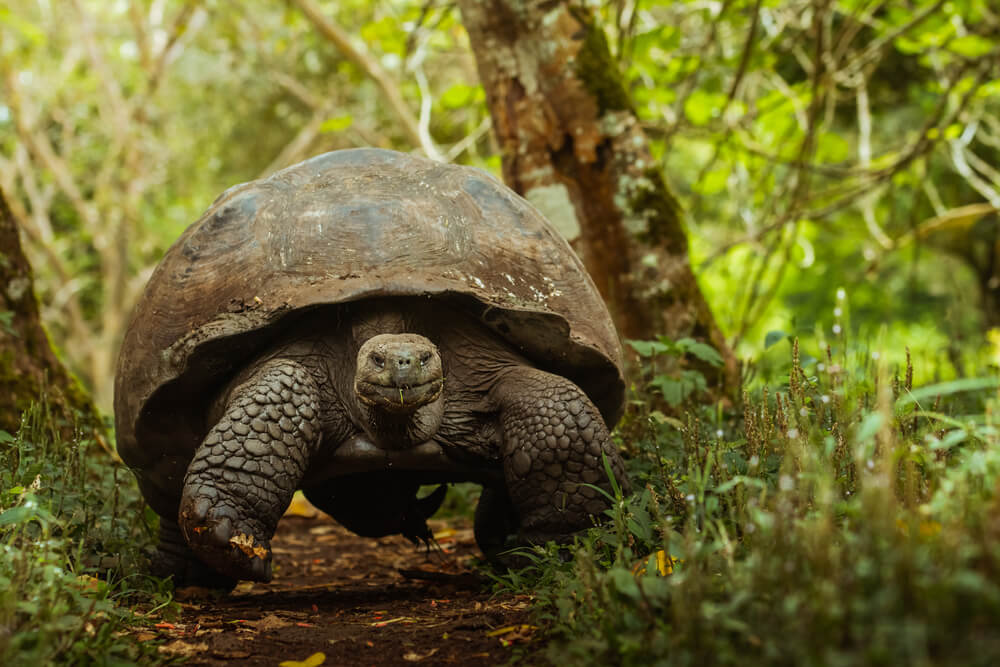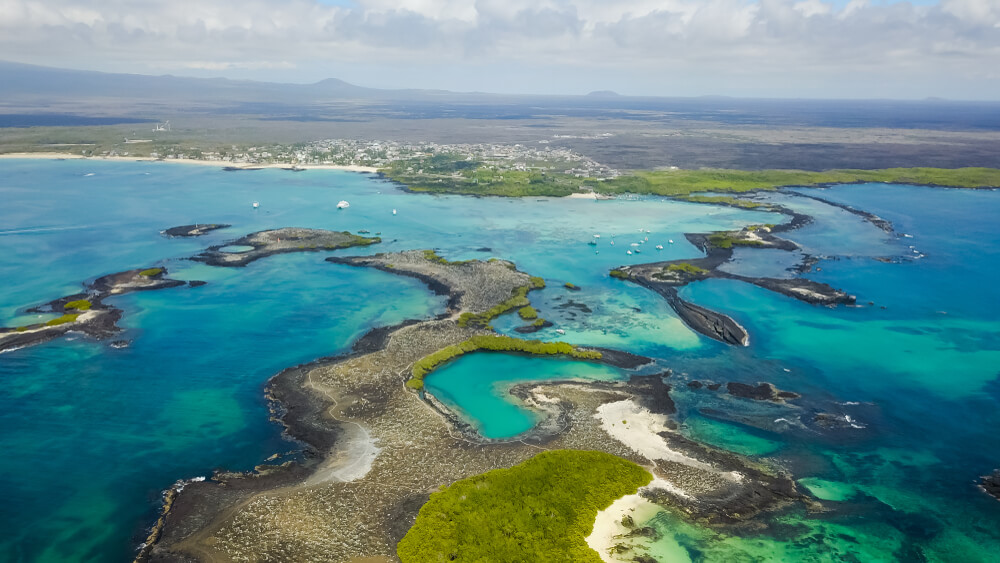Discover the incredible rediscovery of the Fernandina Giant Tortoise, a species once thought extinct for over 100 years, and the successful conservation efforts that led to the find.
With its glorious sunshine, an array of adrenaline-rushing hikes, and luxury cruises if you will, the Galapagos islands are a world in itself. With their volcanoes, scanty population, skies with no light pollution, and a revolutionalising evolution theory (thank you Darwin), these islands are known for their intrepid flora and fauna found nowhere else in the world, making them a place of wonder and amazement for the whole world. Among the many amazing creatures that call these islands home is the Galapagos tortoise, a species that has captured the imagination of naturalists and animal lovers for centuries. And one of these has recently made news!

Fernanda, the Fantastic Giant Tortoise.
Belonging to the rarest tortoise species in the world, and believed to be extinct for over a century now, Fernanda was rediscovered owing to an incredible achievement for conservationists. Classified as the Fernandina Giant Tortoise, also known as Chelonoidis phantasticus, Fernanda and her species are native to Fernandina Island. Her rediscovery has renewed hope for the survival of the species. Efforts are now underway to search for additional individuals on Fernandina Island and to protect and conserve the tortoise's habitat. And why is she called “fantastic”? Because of the remarkable nature of her rediscovery. Read on!
What Stimulated The Possibility Of Extinction?
It was believed that the Fernandina Giant Tortoise had gone extinct due to a combination of human activities and natural disasters. Historically, tortoises were hunted by sailors and whalers for their meat and oil and introduced species such as rats and feral cats preyed on tortoise eggs and young hatchlings.
Additionally, volcanic eruptions and other natural disasters may have further reduced the population of the Fernandina Giant Tortoise, as well as destroyed their habitat. Despite being critically endangered, the Fernandina Giant Tortoise was not officially declared extinct until the discovery of Fernanda.
The Journey of Discovery…

Fernanda was rediscovered in a joint expedition by the Galapagos National Park and the Galapagos Conservancy on Fernandina Island in February 2019.
The expedition team had been conducting a survey of the island when they came across several tortoise tracks, which led them to the female tortoise. The tortoise was estimated to be around 100 years old, and her discovery was a momentous event, as she was the first Fernandina Giant Tortoise seen in over 100 years!
After her discovery, she was taken to a breeding center on Santa Cruz Island for evaluation and health checks. DNA samples were taken to confirm that she was, in fact, a Fernandina Giant Tortoise, and to determine whether there were any other individuals of her species still living on the island.
The Conservation Effort.
After Fernanda’s rediscovery, conservationists and scientists immediately took action to protect her and conduct further research to locate more of her species on Fernandina Island. The breeding center is also providing an opportunity for scientists to study the tortoise's genetics and better understand the species' biology and ecology.
In addition to these efforts, conservationists are working to protect and conserve her habitat on Fernandina Island. This involves monitoring the island for introduced species, which can prey on tortoise eggs and young, as well as assessing the impact of volcanic activity on the island's ecosystem.
A Glimmer of Hope…
The rediscovery of Fernanda, the Fernandina Giant Tortoise, was a significant event in the world of conservation. After all, the species was thought to be extinct for over a century. Since the rediscovery, conservationists have been working to ensure that the tortoise is healthy and adapting to its new environment.
In 2021, there was hopeful news that a male Fernandina Giant Tortoise was spotted during a follow-up expedition to the island. The discovery of a male tortoise is an important development as it raises the possibility of breeding and increasing the population of the species. Scientists are planning to conduct further surveys and searches of the island to determine if there are more individuals and assess the potential for breeding.
The Importance Of Conservation.
Fernanda’s rediscovery is a remarkable example of how conservation efforts can be successful in protecting and preserving endangered species. There are several reasons why this discovery is considered a success story:
- Persistence and Dedication: The rediscovery was the result of years of dedicated effort by conservationists and scientists. Despite the species being declared extinct, they continued to search for evidence of its existence and remained committed to protecting the ecosystem of the Galapagos.
- Collaboration: The rediscovery was made possible through collaboration between multiple organisations, including the Galapagos National Park, the Giant Tortoise Restoration Initiative, and the Turtle Conservancy. The combined efforts and expertise of these groups helped to maximise the chances of finding the species.
- Effective Conservation Measures: The rediscovery led to immediate measures to protect her and her habitat. She was transported to a breeding center and monitored closely by experts. These actions have helped to ensure her survival and improve the chances of finding more individuals.
- Awareness and public support: The rediscovery has drawn attention to the importance of conservation and the need to protect endangered species. It has been widely publicised, raising awareness and support for conservation efforts in the Galapagos and beyond.
To sum it up, this is an iconic example of the potential for success when conservation efforts are persistent, collaborative, and based on effective measures. It highlights the importance of ongoing conservation efforts to protect endangered species and their habitats and provides hope for the future of biodiversity conservation.
In conclusion, Fernanda’s rediscovery–after being thought extinct for over a century–is a remarkable event that showcases the resilience of nature and the importance of conservation efforts. Her story serves as a reminder of the importance of preserving the biodiversity of our planet and protecting endangered species and their habitats. The successful rediscovery of this rare tortoise species provides hope for the future of conservation and underscores the critical role that humans can play in preserving the natural world. And as for Fernanda, the sole surviving Fernandina Giant Tortoise, she is currently residing at the Giant Tortoise Breeding Centre of the Galápagos National Park on Santa Cruz Island!